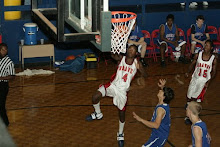Interview with Robert Jacobsen
Curator of Asian Art
1. What is this room and how does it fit in with the larger building it would have been a part of?
In a cultured household in traditional China—a Confucian household—the library would have been the most important room in the house. After the great hall, it would have been the most important room, for certain. And it was here that the trained scholars, often working for the government as part of the bureaucracy, would keep their art. They would keep their books here. They would do their writing here. It could be poetry. It could be court memorials, but this becomes the intellectual crossroads of the home, and—to a degree—of Chinese culture.
2. What about the furnishings?
(1) Scholar's studies in the Ming and Ch'ing dynasties were furnished according to simple tastes. During the late Ming and early Ch'ing dynasties, rooms like this were put together by scholars—members of the Literati—and typically furnished with rather simple tastes: beautiful proportioned hardwoods, and cabinets that were simpler rather than ornate in decoration and overall appearance.(1)
3. What does the term "Literati" mean?
It's a whole class of Chinese men. They all were trained in Confucian classics—some served the state as scholar officials—and all played the reclusive role of retired gentlemen.
4. There are many natural elements in and around this room.
They would collect objects of nature, like great garden rocks.(2) The big rocks represented actual mountain landscapes of China. They would typically want to have plantings of bamboo and perhaps a few other plants just outside their window. Nature was very important to them. It was a focal point. It was a meditative process to view and think of nature.
And, of course, the Literati are the great landscape painters of China, so they were concerned with nature in much of their works. They were also often the nature poets of China, so they were interested in creating verse around landscape, the dynamic forces of the universe that nature and landscape represented to them.
5. Were they artists in the same way we think of artists today?
It's important to keep in mind that these scholar artists were not professionals. They prided themselves on being amateurs, on the fact that they didn't have to sell their works or pander to a mass audience.
(2) Rubbings taken from famous stone tablets were often turned into books. Most of their paintings are quite small—no larger than books, in many instances. They were very, very interested in collecting and studying their own history. Famous inscriptions were often taken from carved stone tablets, and these rubbings turned, then, into books that would be kept in the library.(2) These were sources not only of history and philosophy, but also of writing styles of past masters.
So we see a combination of this organic taste, this interest in nature, this amateurism and the interest in books and ancient China, all come into play in the type of painting they produced, which is something that was based on the brushwork of prior masters.
6. Lacking a mass audience, what became of their works?
Their objects were passed back and forth amongst one another. These artists painted for other artists in their circle, or friends of theirs. On occasion, pieces could be commissioned for someone's birthday, or an anniversary event or some sort of government award. The art was used that way, but it wasn't done wholesale for a mass market, for popular consumption. That meant that the paintings were often very small. They would be viewed by only one or two people at a time. They were hardly ever used as decoration. In fact, they were kept more like books in a library, which is why the library becomes the repository of their scrolls, their albums and their fan paintings
Subscribe to:
Post Comments (Atom)

No comments:
Post a Comment